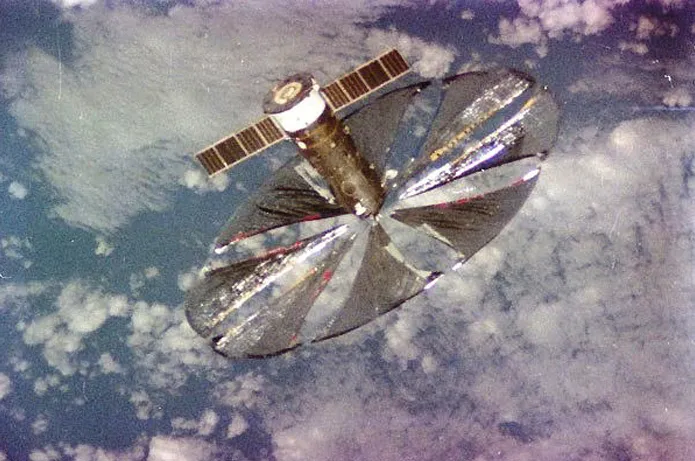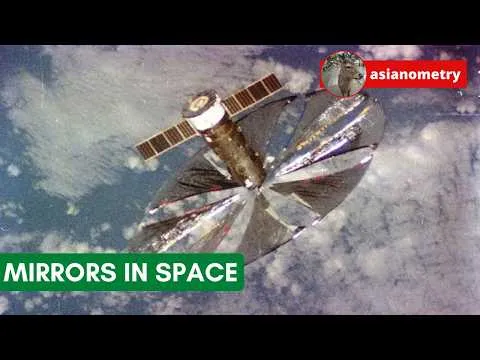
Actual photograph of the Znamya 2 space mirror. Credits
In 1993, Russia launched a very curious project into space: a giant orbital mirror designed to reflect sunlight onto Earth. The idea was simple but ambitious. The goal was to use this enormous mirror to illuminate certain areas of the planet during nighttime, perhaps to extend daylight hours or to help regions with limited sunlight in winter.
This "space mirror" had a diameter of about 20 meters and was placed in low Earth orbit, relatively close to our planet (you can admire it at this link). The project had several objectives, including possible military and scientific applications. For example, it was considered for illuminating strategic areas or for improving photosynthesis in crops, potentially benefiting agriculture.
Although the project was fascinating and ambitious, it had a very short life. After the launch, the mirror functioned for only a few months before being abandoned. Technical problems and high costs led Russia to discontinue the program.
Today this idea might seem like something out of a science fiction movie, but at the time it was considered an innovative way to use space for practical and strategic purposes. It is worth noting that, despite how unusual the concept was, it attracted some international interest, and a few countries began to follow the project with curiosity. Even though the experiment was brief, it left an interesting mark in the history of space technologies.
